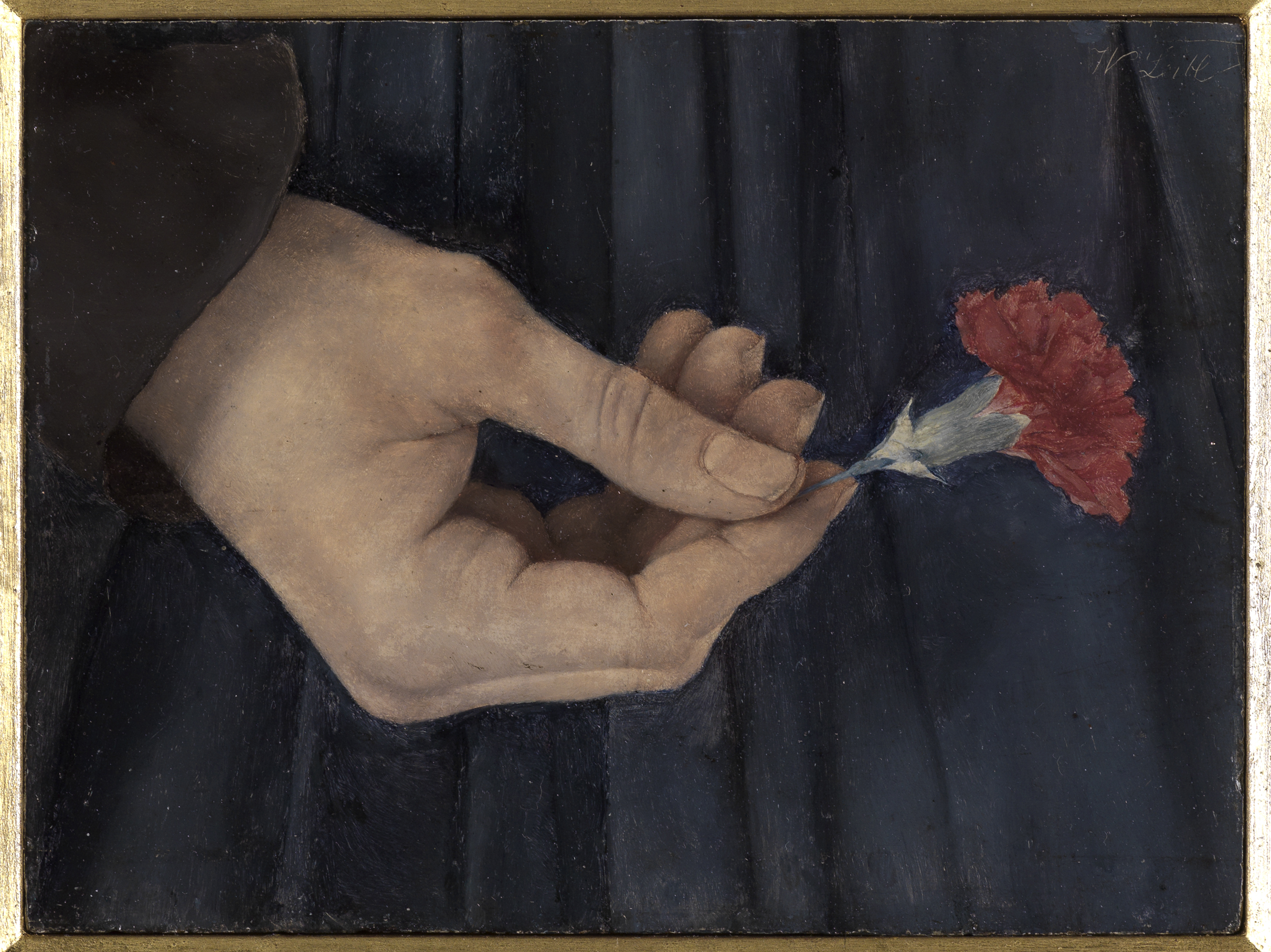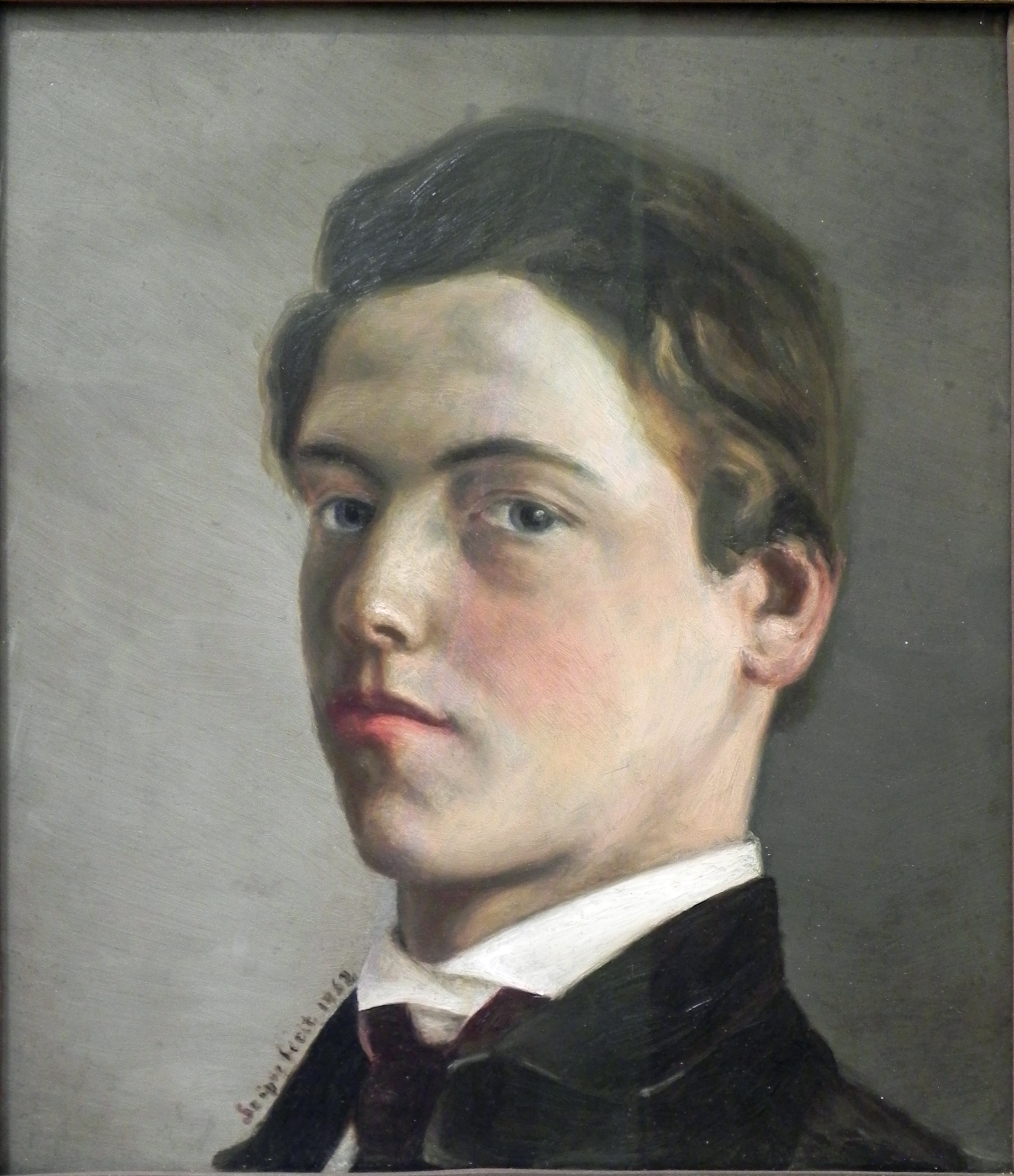This surprising painting of a hand is a fragment of the painting The Girl with Carnation, painted around 1880 and later cut up by Wilhelm Leibl, a German realist painter of portraits and scenes of peasant life. Three other surviving sections, showing the girl’s left hand, head, and a section of the bodice, make it possible to reconstruct the painting. The girl was depicted from the front, standing as a three-quarter figure. In her right hand, she held a carnation in front of the apron of the traditional dress, whereas her left hand was hanging loosely from her arm that was resting on the back of a chair.
Why did Leibl cut the painting? It was caused by the way he painted. He usually started out freely and without preliminary drawing to place color tone next to color tone, but always kept the overall effect in mind. This manner of realistic painting, however, runs the risk of individual pictorial elements obtaining too much significance of their own and ceasing to serve the picture as a whole, so that the composition is in danger of falling apart. This was the case in the painting of the Carnation Girl, where Leibl, concentrating on the microscopically precise rendering of details, lost track of the dimensional relationships and therefore did not adhere to the proportions. His scrupulousness did not allow him to preserve the painting, so he divided it into individual parts, whose existence as independent works of art speaks for their great painterly quality.
We present today's work thanks to the Staatliche Kunsthalle in Karlsruhe.
P.S. Speaking of body parts in art—check out this tiny brooch depicting only a sitter's eye. :O
P.P.S. Dear DailyArt users, please consider donating to the development of our new DailyArt apps. Without them we won't be able to operate much longer, as the ones you use now are simply too old. :( Learn how you can help!


 Wilhelm Leibl
Wilhelm Leibl